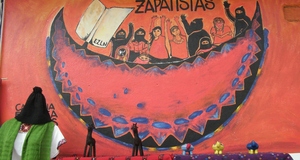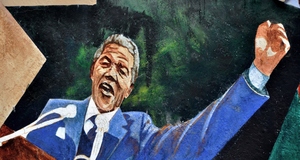Featured Article:The Rise of Gay Liberation in Toronto: From Vilification to Validation
By
2017, Vol. 9 No. 01 | pg. 2/2 | « The Bathhouse RaidsState conceptions of specific issues are instrumental in the formation of social ideologies about some individuals and/or groups (Tarrow, 1996). With the legal system failing to provide protection to members of the gay community, and the overall disregard for the rights of homosexuals, it came as no surprise that incidents of violence increased. It was following the murder of Emanuel Jaques that the gay male community in Toronto was subjected to increased regulation and violence at the hands of both media and the police (Townsend, 2012). Through police raids, gay activism was met with resistance on behalf of government forces and wider society.102 The police were given power by the state to target homosexuals for sex in public, and owning, or being found in a ‘bawdy house’ (Jackson & Persky, 1982). It was during this time that the employment of violence and harassment by police was seen as a justified measure to ensure public safety. On December 11th 1978, the Barracks bathhouse, a gay steam room located near Spadina Avenue was raided by Toronto police officers (Balogh, 2006). As a result, three owners were charged with operating a bawdy house and approximately 23 men were charged with being found in a common bawdy house (Warner, 2002). During this time, police had seized lists of the members of these establishments in attempt to make these names public (Silversides, 2006). Deputy Police Chief Ackroyd called school boards to inform them about teachers who had been arrested during the raids. Although the officers who released the names of those being charged were reprimanded, Ackroyd reminded the public that they could access the list of individuals would be available at the courthouse (Graydon, 2011). In the course of raiding the bathhouse, punched holes in the walls and kicked in doors, all while being demeaning towards those arrested (Hawkes, 2007). Additionally, during the raid the police had publicly displayed any items of sexual paraphernalia that was being seized (Nash, 2005). In this way, police, with the help of local media, reinforced ideas of homosexual deviance throughout society. The Toronto Bathhouse raids were criticized as being a blatant attempt to threaten all those who engaged in acts of consensual sex as well as seeking to intimidate the gay community (Hier & Greenberg, 2010). It was also suggested this incident showed police’s apparent view that all homosexuals are pedophiles (Graydon, 2011). On December 12th 1978, in reaction to the raid, around 400 individuals gathered at the Church Street Community Centre, in downtown Toronto, to demonstrate their support for all the men who were targets of police harassment (Balogh, 2006). As a result, the Gay Defense Fund was created, which raised $5,000 to finance the cost of court proceedings for the individuals who were facing charges (Warner, 2002). Beginning with the raids of the bathhouses in Toronto, incidents of regulation spread across southern Ontario to other venues such as teahouses and clubs (Hier & Greenberg, 2010). Incidents of regulating homosexuality, through raids, soon took place throughout Canada (Bérubé, 2003). For example, in another incident, that occurred on February 5th, 1981, over 300 men were arrested under bawdy house laws (Nash, 2005). The arrests marked the largest mass arrest occurring in separatist crisis in Quebec (Vance, 1984). On February 6th, reaction to the raids occurring throughout Canada led to one of the first mass demonstrations from the gay community in Canada (Paré, 2015). Gay organization leaders gathered and organized a number of demonstrations in which three thousand individuals marched on the streets of downtown Toronto (Silversides, 2006). With the help of the Right to Privacy Committee (RTPC), out of the 300 men that were being charged in the 1978 and 1981 raids, around 90% of the convictions were dropped (Faulkner, 1999). However, the resistance to police actions on behalf of the gay community failed to stop the regulation and discrimination of gay men by police and the wider community.On the night of February 5th 1982, four more raids were carried out on Toronto steam baths (Hier & Greenberg, 2010). Approximately 200 officers, carrying hammers and crowbars, broke through the doors, entered each of the locations and in total over 300 men were arrested as either keepers or found-ins (Hawkes, 2007). All of these raids led to numerous complaints about offensive police conduct and the use of excessive force with little reprisal (Bérubé, 2003). As a result of the bathhouse raids, which occurred throughout the decades, the economic and social change concluded in a more organized and unified approach to standing up against the unjust treatment from police (Faulkner, 1999). However, it was not until the murder of a Toronto high-school librarian that discourses surrounding homosexuality began to change substantially. The Kenneth Zeller MurderIn June 1985, the brutal murder of a Toronto School Board secondary school librarian, by a group of young male students, brought issues of homophobia to the forefront of public debate (McCaskell, 1986). Kenneth Zeller was a teacher and librarian at Western Technical School and was 40-years-old at the time of his murder (The Ottawa Citizen, 1985). The incident took place in the summer of 1985, when five teenage boys, who were partying one night, decided to go and do some “fagot-bashing (Lunny, 2011, p. 66).” The group of young men were reportedly out celebrating the end of the school year and had been drinking (Valaitis, 2011). The gang of youth apparently made their way to the High Park area in Toronto where cruisers were known to be (Paré, 2015). Zeller, having just left a friends’ house, had been walking around a well-known gay area in a downtown park and was approached by the group of boys who were looking to engage in violence (Prentice, 1994). While Zeller walked by the group of youths, he was tripped by one of them and as he got up he was chased and ended up running over 100 metres to his car (Prentice, 1994). While he got his car door open, he failed to make it inside and was violently attacked by the group of teenagers who began to beat him around his chest and head (Petersen, 1991). It was not until approximately three minutes later that they stopped attacking him, then vandalize his car, and left the area (The Ottawa Citizen, 1985). Zeller’s body was found after midnight on June 23, 1985 in his car, located in a west-end parking lot in Toronto (Lunny, 2011). The five teenagers believed to be involved in the murder of Zeller were arrested on June 28th 1985 and were tried in adult court (Lunny, 2011). During court proceedings the boys were described by their defence as being normal, average kids (Prentice, 1994). A psychologist testified that a combination of social factors which impacted the outcome of that night such as, the dynamics of the group and the implicit social permission to victimize gays, was combined with the effects of alcohol (Lunny, 2011). Although widely contested at trial, Dr. Gary Hunt stated that none of the boys disliked homosexuals and instead were against any public displays of affection, whether homosexual or heterosexual, occurring in ‘their’ park (The Ottawa Citizen, 1985). The five young men, ranging in age from 15 to 18-years-old, were each sentenced to nine years in prison, with all of them pleading guilty to manslaughter (Lunny, 2011). Unfortunately, media reports failed to properly acknowledge that Zeller’s murder was fueled by homophobia (Valaitis, 2011). Instead, the murder was considered to be a case about male bonding while drinking and the unfortunate effects of peer pressure (Lunny, 2011). Specifically, the murder of Zeller, by a group of young male students, can be seen as one example of the negative outcomes that can occur as a result of increased social resistance to, and stigmatization of, particular groups of people. In other words, past events in Toronto, and throughout Canada, displayed the conditions of acceptability in terms of discrimination and violence towards gay men. Unlike the murder of Emanuel Jaques, were the assailants were identified as homosexual, Zeller, a gay male who was murdered by a group a heterosexual youth, paved the way for significant changes to occur in the treatment of non-heterosexual individuals in Toronto. The Triangle ProgramShortly after the murder of Zeller, important questions were raised about why the attackers, who were all high school students, would have committed such a horrible crime (Selby & Goldstein, 2000). The links that this incident could have to what they were being taught in school was at the center of public debate (FitzGerald & Rayter, 2012). The school board had responded by issuing a formal statement, indicating that they would not tolerate any sort of harassment and/or discrimination (Sears, 2005). Trustee Olivia Chow made a number of recommendations to the board in order to address homophobia that was occurring within schools throughout the district (McCaskell, 1986). Based on the recommendations made, the school board reinforced the idea of implementing programs and curricula aimed at increasing the understanding of human rights among both faculty and students (Selby & Goldstein, 2000). Unfortunately, despite the efforts being made during this time, Lesbian, Gay, Bisexual, Transgender, and Queer (LGBTQ) students continued to be exposed to unsafe school environments (Prentice, 1994). As a result of Zeller’s death, the creation of Toronto’s Triangle program, by the then Toronto School Board, was underway (Russell, 2006). However, it was not until September 1995 that the Triangle Program was developed, based on years of growing activism and concerns on the part of dedicated school officials and members of society (Sears, 2005). The Triangle Program was seen as a significant step in recognizing violence that can occur as a result of homophobic attitudes as well as the increased risk of emotional and physical abuse experienced by LGBTQ youth within school (Valaitis, 2011). The Triangle Program is the only gay high school classroom in Canada for LGBTQ students, from grades 9 through 12, looking to escape violence and discrimination they may have experienced in school or at home (Russell, 2006). Close to 250 students, from 1996 until 2004, had gone through the Triangle Program, composed of specialized LGBT studies in sociology, history, and literature, as well as providing individual academic sessions (Russell, 2006). The programs mission is to provide classrooms where LGBT students can earn credits and learn while they are in an environment that is free of harassment (Valaitis, 2011). Overall, the Triangle Program can be seen as a positive step towards promoting equality and respect among future generations. The emergence of this program was pivotal, reflecting the changing attitudes and increasing acceptance occurring among the general public. ConclusionThroughout the years, acts of resistance have tackled a wide-range of issues such as discrimination, violence, human rights, and other factors not only impacting the LGBTQ community, but in particular gay men (Teske & Tétreault, 2000). Resistance has frequently combined numerous types of protests which worked in cooperation with different groups and individuals with various reasons for participation (Keith & Pile, 2013). As this paper has demonstrated, the already negative attitudes directed towards gay men were heightened after the Toronto rape and murder of Emmanuel Jaques (Graydon, 2011). This horrific event led to the belief that homosexuality was a threat, resulting in gay men and the liberation for gay rights falling under increased public scrutiny and state regulation. Specific incidents of violence, in particular the murder of Emanuel Jaques, with the assistance of the media, became catalysts for the amplification of hostility towards members of the gay community. Amidst this regulation and social condemnation towards homosexuality, conditions of acceptability, in terms of discrimination and violence towards gay men, were displayed (Kinsman & Gentile, 1992). It was not until the murder of Kenneth Zeller, by a group of high school students, that social attitudes and policies began to make some positive strides and the re-shifting of politics occurred. Zeller’s death displayed the impact that social attitudes were having on the treatment of the homosexual community. Overall, the incidents of violence presented within this paper highlight the shifts in discourse which occurred throughout Toronto in the early years of the gay liberation movement. It therefore can be argued that changes, both positive and negative, often occurred only in reaction to the increasing acknowledgment of specific incidents of violence. With this in mind, although many positive advancements have been made for gay rights in Canada, there is still a continual need for positive media representations concerning the LGBTQ community to help promote and encourage positive perceptions among the community. Furthermore, issues of gender and sexuality must be addressed adequately in schools to promote tolerance and reduce incidents of violence (Sears, 2005). ReferencesAdam, B. D. (1999). Moral Regulation and the Disintegrating Canadian State. The Global Emergence of Gay and Lesbian Politics: National Imprints of a Worldwide Movement, 12-29. Appiah, K. A. (2006). The Politics of Identity. Daedalus, 135(4), 15-22. Armstrong, E. A., & Bernstein, M. (2008). Culture, Power, and Institutions: A Multi‐Institutional Politics Approach to Social Movements. Sociological Theory, 26(1), 74-99. Balogh, P. (2015). Queer Quarantine: Conceptualizing State and Dominant Cultural Responses to Queer Threats as Discursive Tactics and Technologies of Quarantine (Doctoral dissertation, Carleton University Ottawa). Benford, R. D., & Snow, D. A. (2000). Framing Processes and Social Movements: An Overview and Assessment. Annual Review of Sociology, 611-639. Bérubé, A. (2003). The History of Gay Bathhouses. Journal of Homosexuality, 44(3-4), 33-53. Chorev, N. (2010). On the Origins of Neoliberalism: Political Shifts and Analytical Challenges. In Handbook of Politics (pp. 127-144). Springer New York. Dobrowolsky, A. (2008). The Women’s Movement in Flux: Feminism and Framing, Passion, and Politics. Group Politics and Social Movements in Canada, 159-80. Duggan, L. (1994). Queering the State. Social Text, (39), 1-14. Faulkner, M. E. (1999). A Case Study of the Institutional Response to Anti-Gay/Lesbian Violence in Toronto (Doctoral dissertation, National Library of Canada= Bibliothèque nationale du Canada). FitzGerald, M., & Rayter, S. (Eds.). (2012). Queerly Canadian: An Introductory Reader. In Sexuality Studies. Canadian Scholars’ Press. Fraser, N., & Naples, N. A. (2004). To Interpret the World and to Change It: An Interview with Nancy Fraser. Signs, 29(4), 1103-1124. Graydon, M. (2011). “Kids Not Rights, is their Craving”: Sex Education, Gay Rights, and the Threat of Gay Teachers. Canadian Review of Sociology, 48(3), 313-339. Hawkes, B. (2007). Toronto Police Raid Gay Bathhouses. Great Events from History: 1848-1983, 1, 376. Hier, S. P., & Greenberg, J. (Eds.). (2010). Surveillance: Power, Problems, and Politics. UBC Press. Jackson, E., & Persky, S. (1982). Flaunting It!: A Decade of Gay Journalism from the Body Politic: An Anthology. New Star Books. Kallen, E. (1996). Gay and Lesbian Rights Issues: A Comparative Analysis of Sydney, Australia and Toronto, Canada. Human Rights Quarterly, 18(1), 206-223. Keith, M., & Pile, S. (2013). Geographies of Resistance. Routledge. Khayatt, M. D. (1992). Lesbian Teachers: An Invisible Presence. SUNY Press. Kimmel, D., & Robinson, D. J. (2001). Sex, Crime, Pathology: Homosexuality and Criminal Code Reform in Canada, 1949–1969. Canadian Journal of Law and Society, 16(01), 147-165. Kinsman, G., & Gentile, P. (2010). The Canadian War on Queers: National Security as Sexual Regulation. UBC Press. Koul, S. (2013). A Murder on Younge Street: The Death of Emanuel Jaques. Hazlift. Accessed May 7, 2014. http://penguinrandomhouse.ca/hazlitt/feature/murder-yonge-street-death-emanuel-jaques. Landolt, P. (2008). The Transnational Geographies of Immigrant Politics: Insights from a Comparative Study of Migrant Grassroots Organizing. The Sociological Quarterly, 49(1), 53-77. Larocque, S., Chodos, R., Waterhouse, B., & Blair, L. (2006). Gay Marriage: The Story of a Canadian Social Revolution. James Lorimer & Company. Lunny, A. M. (2011). Victimhood and Socio-legal Narratives of Hate Crime Against Queer Communities in Canada, 1985-2003 (Doctoral Dissertation). MacDougall, B. (2000). Queer Judgments: Homosexuality, Expression, and the Courts in Canada. University of Toronto Press. Manalansan, M. F. (1995). In the Shadows of Stonewall: Examining Gay Transnational Politics and the DiasporicDdilemma. GLQ: A Journal of Lesbian and Gay Studies, 2(4), 425-438. Martin, D. G., Hanson, S., & Fontaine, D. (2007). What Counts as Activism?: The Role of Individuals in Creating Change. Women's Studies Quarterly, 35(3/4), 78-94. Masson, D. (2006). Constructing Scale/Contesting Scale: Women’s Movement and Rescaling Politics in Quebec. Social Politics: International Studies in Gender, State & Society, 13(4), 462-486. McCaskell, T. (1986). Lesson Learned? The Body Politic. Retrieved from: https://archive.org/stream/bodypolitic111toro/bodypolitic111toro_djvu.txt. McLeod, D. W. (1996). Lesbian and Gay Liberation in Canada: A Selected Annotated Chronology, 1964-1975. ECW Press/Homewood Books. Millward, L. (2015). Making a Scene: Lesbians and Community Across Canada, 1964-84. UBC Press. Murphy, T. (2013). Reader's Guide to Lesbian and Gay Studies. Routledge. Myers, J. (2013). Historical Dictionary of the Lesbian and Gay Liberation Movements. Scarecrow Press. Nardi, P. M., & Schneider, B. E. (2013). Social Perspectives in Lesbian and Gay Studies: A Reader. Routledge. Nash, C. J. (2005). Contesting Identity: Politics of Gays and Lesbians in Toronto in the 1970s: Identidad en Conflicto: políticas de gays y lesbianas en Toronto en los años 1970. Gender, Place & Culture, 12(1), 113-135. Opp, J., & Walsh, J. C. (Eds.). (2010). Placing Memory and Remembering Place in Canada. UBC Press. The Ottawa Citizen. (1985). Teenagers’ Killing of Gay Mystifies Parents. The Ottawa Citizen. Accessed February 10, 2014. https://news.google.com/newspapers?nid=2194&dat=19851204&id=hqQyAAAAIBAJ&sjid=iu8FAAAAIBAJ&pg=1348,915773&hl=en Paré, M. (2015). History of Gay Toronto and Birth of Queer West. Queer West. Accessed March 19, 2015. http://www.queerwest.org/history.php. Petersen, C. (1991). Queer Response to Bashing: Legislating against Hate, A. Queen's LJ, 16, 237. Podmore, J. A. (2006). Gone ‘Underground’? Lesbian Visibility and the Consolidation of Queer Space in Montréal. Social & Cultural Geography, 7(4), 595-625. Prentice, S. (1994). Sex in Schools: Canadian Education & Sexual Regulation (Vol. 36). James Lorimer & Company. Rankin, L. P. (2000). Sexualities and National Identities: Re-Imagining Queer Nationalism. Journal of Canadian Studies, 35(2), 176. Robinson, K. H. (2008). In the Name of 'Childhood Innocence': A Discursive Exploration of the Moral Panic Associated with Childhood and Sexuality. Cultural Studies Review, 14(2), 113. Russell, V. (2006). Equity Undone: The Impact of the Conservative Ontario Government's Education Reforms on the Triangle Program. Journal of Gay & Lesbian Issues in Education, 3(4), 45-57. Sears, J. T. (Ed.). (2005). Youth, Education, and Sexualities: AJ (Vol. 1). Greenwood Publishing Group. Selby, D., & Goldstein, T. (2000). Weaving Connections: Educating for Peace, Social and Environmental Justice. Canadian Scholars’ Press. Silversides, A. (2003). AIDS Activist: Michael Lynch and the Politics of Community. Between the Lines. Smith, M. C. (1999). Lesbian and Gay Rights in Canada: Social Movements and Equality-Seeking, 1971-1995. University of Toronto Press. Smith, M. (2012). Identity and Opportunity: The Lesbian and Gay Rights Movement..” Queerly Canadian: An Introductory Reader in Sexuality Studies, 121-37. Snow, D. A. (2004). Framing Processes, Ideology, and Discursive Fields. The Blackwell Companion to Social Movements, 380-412. Tarrow, S. (1996). States and Opportunities: The Political Structuring of Social Movements. Comparative Perspectives on Social Movements: Political Opportunities, Mobilizing Structures, and Cultural Framings, 41-61. Teske, R. L., & Tétreault, M. A. (2000). Feminist Approaches to Social Movements, Community, and Power: Conscious Acts and the Politics of Social Change (Vol. 1). University of South Carolina Press. Tillin, L. (2011). Questioning Borders: Social Movements, Political Parties and the Creation of New States in India. Pacific Affairs, 84(1), 67-87. Townsend, D. (2012). The “Blood Libel” and the Spectator’s Eye in Norwich and Toronto. Queerly Canadian: An Introductory Reader in Sexuality Studies, 451. Valaitis, V. (2011). Righting 'Sex-Ed in Ontario: Adult Anxiety Over Child and Adolescent Sexual Knowledge and the Government's Undemocratic Mismanagement of Ideological Pluralism. Warner, T. (2002). Never Going Back: A History of Queer Activism in Canada. University of Toronto Press. Zimmerman, B. (Ed.). (2013). Encyclopedia of Lesbian Histories and Cultures. Routledge. Suggested Reading from Inquiries Journal
Inquiries Journal provides undergraduate and graduate students around the world a platform for the wide dissemination of academic work over a range of core disciplines. Representing the work of students from hundreds of institutions around the globe, Inquiries Journal's large database of academic articles is completely free. Learn more | Blog | Submit Latest in History |


















